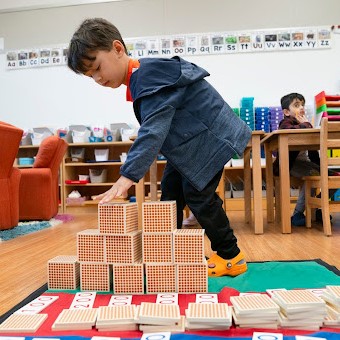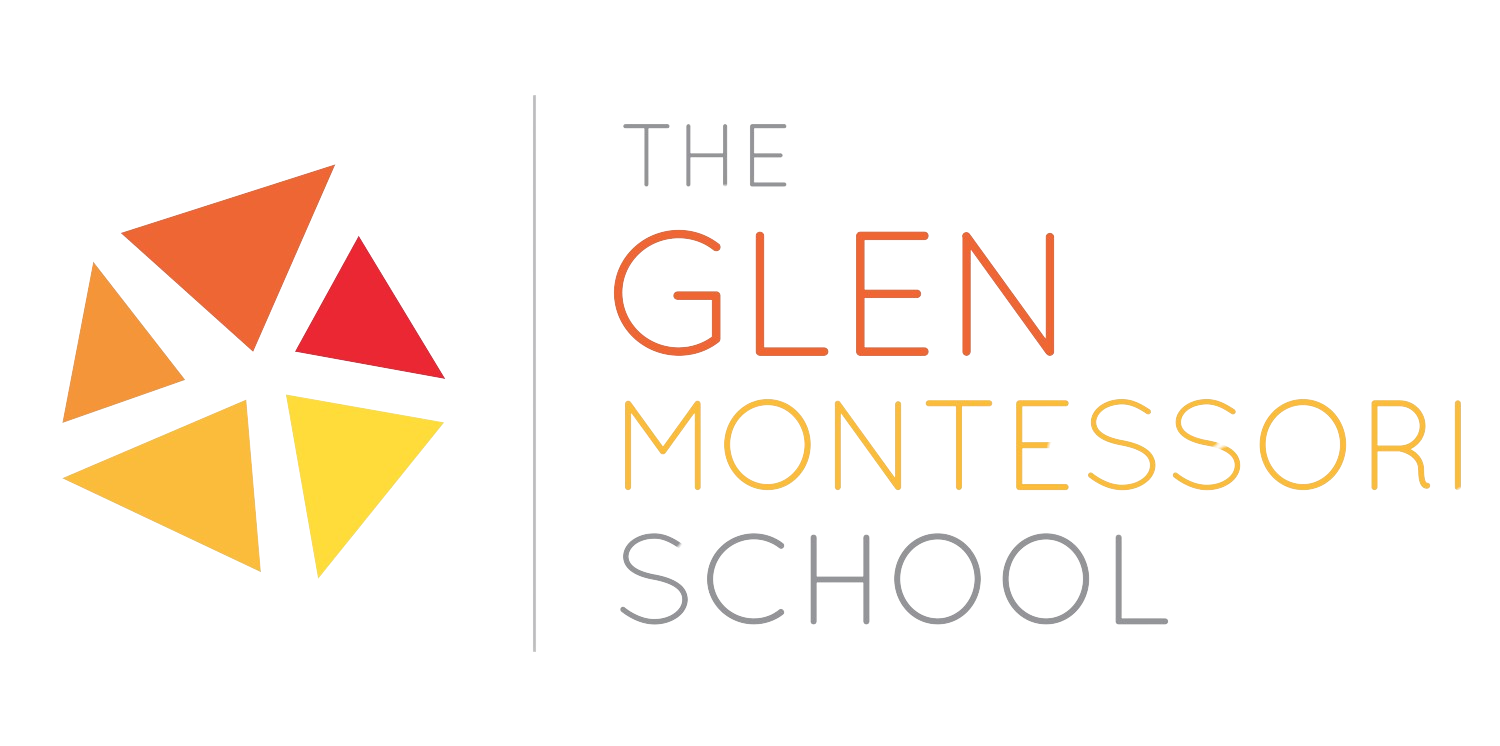What is a Montessori classroom like for 3- 6 year olds?

What is a Montessori classroom like for 3- 6 year olds?
Montessori classrooms are seen as environments for learning. They are curated carefully to help children focus, feel calm, work independently, learn from each other, and be observed and guided by adequately trained Montessori teachers.
Each section of the early childhood classroom addresses different aspects of a child’s development, including physical (gross and fine motor skills), social, emotional, and cognitive.
There are five areas in each Montessori classroom:
Practical Life: These activities build daily living skills such as dressing, cleaning, and fine motor coordination, fostering independence and confidence. Younger children focus on tasks like putting on shoes and toileting, while older students take on responsibilities like wiping tables after lunch and caring for pets. Read more about Practical Life.
Sensorial: These activities stimulate and refine the senses through color tablets, shape sorting, and texture boxes, helping children explore and classify objects. Iconic Montessori materials like The Pink Tower are often from this category.
Mathematics: Mathematical concepts are introduced using concrete manipulatives like number rods, bead frames, and geometric shapes, allowing children to understand abstract ideas through hands-on learning. At the top of this page is an image of a Kindergartener using the Golden Beads to complete mathematical operations using 5 digits (11,000+),
Language: Montessori classrooms use a phonics-based approach to teaching reading, emphasizing tactile materials like sandpaper letters to connect sounds with symbols. Children often begin with writing before reading, progressing through hands-on activities that build words and sentences at their own pace, fostering natural curiosity and independent learning.
Culture helps children develop their understanding of the world. This begins at a young age with birthday celebrations and grows to encompass what most recognize as science, geography, social studies, and history.
The Children’s House classroom, for children ages 3-6, lays a strong foundation for the growing cognitive expectations of 1st grade when the need for sensorial work diminishes and the transition from concrete work to abstract thinking begins. Older children are also interested in fairness, social justice, and compassion, which are heavily emphasized. Problems are solved in community meetings where open discussion and negotiation are modeled and practiced.
Attend an upcoming open house to learn more about Montessori classrooms for all age levels, or schedule a tour of The Glen.
For more reading:
What is a Prepared Environment?
American Montessori Society – Inside the Montessori Classroom



